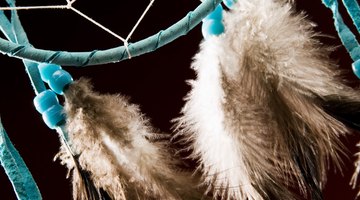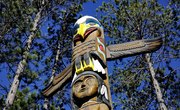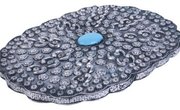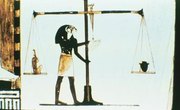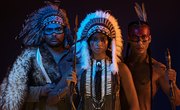Although contemporary dreamcatchers are often large and elaborate, the first dreamcatchers were constructed of willow twigs twisted and weaved into a small hoop representing the circle of life. Animal sinew was then wrapped around and inside the hoop in a spider web pattern. The hoop was sometimes covered in leather and a feather was attached. Dreamcatchers originated in the Ojibwa Nation, and were later adopted by the Lakota and other American Indian tribes who added beads, gem stones and lots of beautiful feathers.
Spiritual Meaning of Dreamcatchers
The dreamcatcher is rich in symbolism, with almost every part having spiritual connotations. The circular shape of the dreamcatcher represents the circle of life, with no beginning and no end. This is significant to many Native Americans because they believe that death is a part of life and that the spirit lives on. The dreamcatcher is woven to resemble a spider's web, and a single bead represents the spider. Multiple beads represent trapped dreams. Dreamcatchers often have different types of feathers. Birds such as eagles are important spiritual signs and symbols in the Native American culture. The purpose and spiritual meaning of dreamcatchers varies by tribe. For instance, some tribes believe that spiritual messages in dreams come through the dreamcatcher and slide down the feathers to the dreamer.
Dreamcatcher Signficance and Symbolism
In the Ojibwe culture, dreamcatcher meaning and symbolism can best be understood by examining the importance of dreams. The Ojibwe people believe that dreams can provide strength and spiritual guidance to aid them in their personal lives. They believe that dreams can show them future events that will affect tribes or individuals. The Ojibwe often make charms to represent symbols shown to them in their dreams that have personal meaning in their lives. They hope to carry charms with them through their lifetimes and into the afterlife.
Other Dreamcatcher Purpose
Some Native American mothers strapped their infants to a cradleboard while they worked, with dreamcatcher charms suspended from a hoop to help entertain the babies. The dreamcatcher charms were similar to mobiles commonly placed in modern baby cribs. Native Americans also believed that dreamcatcher purpose included protecting children by catching and trapping evil. It was customary for children to keep their dreamcatchers throughout their lifetimes as a good luck amulet.
Differing Interpretations of Dreamcatchers
Various tribes have adopted the tradition of the dreamcatcher meaning and symbolism . However, they have different interpretations of dreamcatcher purpose. The Ojibwe people believe that the dreamcatcher will trap bad dreams and allow good dreams to pass through the small hole in the center and enter into a child or adult's dream state. According to Lakota legend, however, the dreamcatcher does the opposite. The legend states that in a spiritual vision, a Lakota leader met a trickster with great wisdom named Iktomi, who appeared to him in the form of a spider. Iktomi told the man that light and dark forces would try to enter the dreams of people. Iktomi instructed the man to make dreamcatchers to catch the light forces and let the dark ones slip away. Whether dreamcatchers catch the good dreams or the bad, many Native Americans hold to the belief that the spiritual meaning of dreamcatchers must be honored and respected.
Related Articles
References
Writer Bio
Darlene Zagata has been a professional writer since 2001, specializing in health, parenting and pet care. She is the author of two books and a contributing author to several anthologies. Zagata attended the Laurel Business Institute to study in the medical assistant/secretarial program. She earned her associate degree through the U.S. Career Institute.

